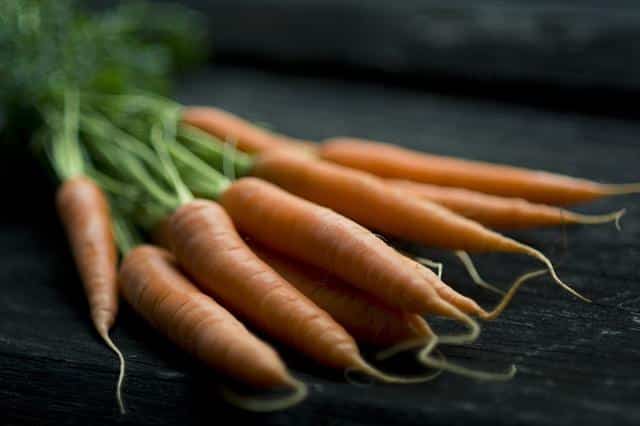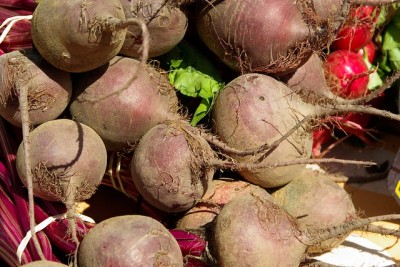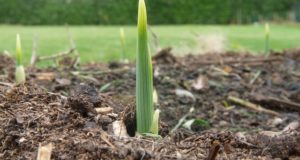In the progression of autumn and winter, many of us are missing the rich tastes of fresh vegetables. There is no need to despair, however, as these months still have some produce to delight our taste buds. What kind of produce can make those long, dark months warm and bright? Root vegetables, of course.
What Are They?
Although root vegetables may look strange and tough skinned, they are actually some of the most nutritiously-dense vegetables you can find. Root vegetables are those from the families of potatoes, carrots, radishes, beets and onions. There are also many spices such as garlic, turmeric, horseradish and ginger that are considered root vegetables. These veggies also include the less-known rutabagas, turnips, celeriac, parsnips, yucca, and Jerusalem artichokes. The list can continue on and on.
Why are they so special and what’s the hype about these amazing root vegetables? They are known for helping fight disease and boosting energy, and are some of the most versatile cooking produce. They also each have their own health benefits, but often share positive characteristics.
Get The Best Deals On Non-GMO Heirloom Seeds Right Here!
Root vegetables absorb a large amount of minerals and vitamins from their surroundings. Most have high amounts of vitamins A, various Bs and C. These veggies are full of antioxidants and many are said to have healing properties. Usually, they are low in sodium and have a healthy amount of fiber, which helps you feel full. These veggies help your digestion and aid in lowering blood sugar. For those who are trying to lose weight or just eat healthy, root vegetables are the way to go.
How to Choose
Root vegetables should always be firm and without blemishes or soft spots, so remember “the harder, the better.” When possible, pick those with tops still attached, or those that have fresh leaves. The leaves and stems should be green and firm. Store them in a cool place, but if you put them in the refrigerator, cover them in plastic or paper and in a drawer.
Potatoes, onions and turnips should not be refrigerated. They tend to rot faster that way.
As you can imagine, root vegetables can be enjoyed in a wide variety of ways: stir fried, boiled, baked, raw, steamed and plain fried. Today we are going to discuss the secrets of roasted root vegetables.
To Roast or Not to Roast
Roasting is actually one of the healthiest methods of cooking your vegetables. The dry heat softens the root vegetables, and you don’t need to add oil or butter unless you so desire. You may worry about losing nutrients, but the benefits outweigh everything else. Boiling vegetables causes more vitamin and nutrient loss. The water causes the healthy contents to leach out. Roasting brings out the natural, sweet taste of root vegetables, as well as a smoky taste which only adds to the dish. Roasting also enhances root vegetables’ natural flavor.
For some root vegetables, especially carrots, roasting increases the “bioavailability” of the vegetable. Bioavailability means how a substance that is ingested becomes available to be absorbed for an organism’s body to use.
Here is a festive recipe for those who wish to try the root vegetable goodness on their own. As always, organic produce is best.
- 2 lbs (907 g) of peeled beets
- 3 peeled parsnips
- 4 peeled carrots
- 6 cloves of garlic
- 6 sprigs of thyme (fresh is better)
- 3 tbs or 45 ml of olive oil
- 4 tsp or 18 ml of balsamic vinegar
- ½ tsp or 2 ml of salt
- ¼ tsp or 1 ml of pepper
Cut vegetables into desired sizes and place in a large mixing bowl. Add spices and oil, and then toss. Grease a roasting pan and pour in the vegetables. Heat oven to 375 degrees Fahrenheit or 190 degrees Celsius, and cook for 1 to 1 ½ hours.
If you are not looking for any fancy dish, collect your produce and a baking sheet. Cut all of your vegetables in equal sizes and spread them evenly over the baking sheet.
Be sure not to overcrowd your vegetables. If there isn’t enough space, they will steam rather than roast.
When you cut onions, remember to cut through the base so that some of the layers stay chunky. Turn your oven to 425 degrees Fahrenheit or 218 degrees Celsius. When roasted to taste, place in a bowl and toss with whatever spice or oil you wish, or just have them plain.
Root vegetables are available year-round, throughout the autumn and even during the winter when everything else is hard to find. These vegetables are rather inexpensive and easy to store. They can usually stay in a cool, dark, slightly humid place, but you can put them in the refrigerator when covered.
Embrace the cooler months with the taste and aroma of the many root vegetables available. Not only do they bring the natural garden taste to your table, but they are healthy, too.
What would you add to this story? Share your tips in the section below:
Every Year Gardeners Make This Avoidable Mistake — But You Don’t Have To. Read More Here.
 Off The Grid News Better Ideas For Off The Grid Living
Off The Grid News Better Ideas For Off The Grid Living






